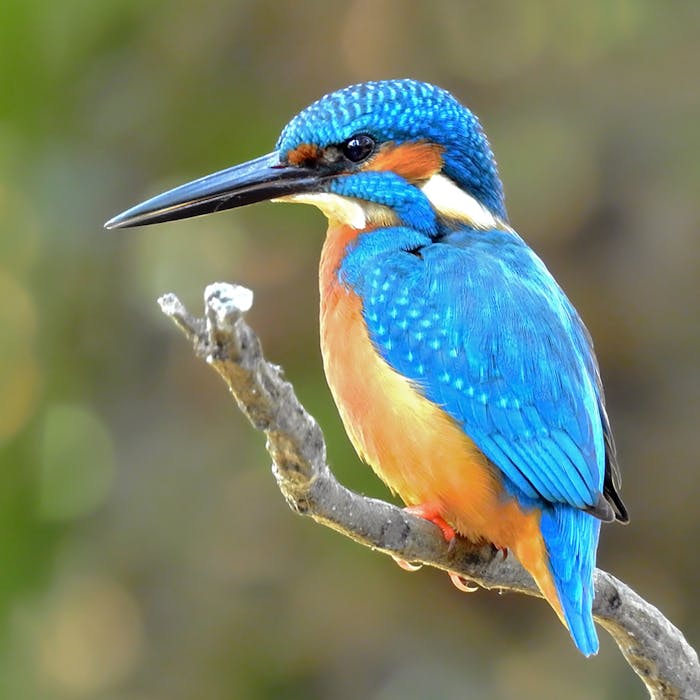
The colourful Kingfisher - a rare but memorable sight
The kingfisher is one of Britain's most delightful and colourful native birds. When seen unexpectedly, it is usually as a sudden and stunning dart of jewelled blue diving into a river. The RSPB has estimated that there are between 4,800 and 8,000 breeding pairs thinly, but widely, spread across the UK. Their scarcity mean kingfishers are protected under Schedule 1 of the Wildlife and Countryside Act 1981.
The Common Kingfisher found in Britain is a small bird with unmistakable plumage. Its back is bright metallic blue and its breast a coppery-brown. The beak is long and black, though females have a red patch at the base. With a wingspan of 25cm and body length of 16cm, a kingfisher is only slightly larger than a robin, although it is nearly twice as heavy.
It hunts by diving into the water for small fish, such as minnows, as well as invertebrates like dragonfly nymphs. The species has transparent eyelids to protect their eyes when diving into water for prey.
Kingfishers tunnel into high-sided riverbanks to make a small chamber for their eggs, producing two to three broods a year. Each clutch can contain up to seven eggs, the first hatching in March to May. The eggs take around 20 days to incubate and chicks fledge after 25 days. The parents feed their young for a further four days before chasing them off and starting the next brood. Kingfishers become sexually mature at one year old.
The common kingfisher is widespread in the UK, though absent from northern Scotland. It is active all year round near rivers, canals and wetlands. The population has been in decline since the 1970s.
Though hard to spot, the best chance of seeing a kingfisher is near slow-moving water. Keep an eye out for them perched on low-hanging branches or posts near the water’s edge as they get ready to dive in.
Further reading
Links to external websites are not maintained by Bite Sized Britain. They are provided to give users access to additional information. Bite Sized Britain is not responsible for the content of these external websites.
